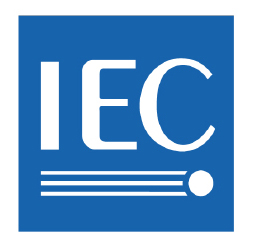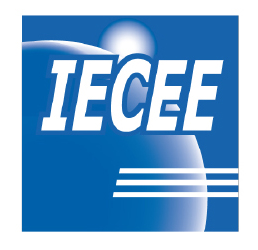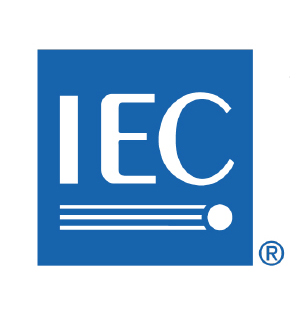Shure Incorporated
Shure Incorporated
| Address(es) |
|
| Website | Not available |
| Status | MEMBER |
| Acceptance date | 2021-01-01 |
Further information
Stage | Country | Name |
|---|---|---|
2 | Germany |
LEGEND: Scope Limitations
- RA : Audio amplifiers with audio power > 0,5 Watts excluded
- RC : Apparatus with connection(s) to a cable distribution system excluded
- RSH : Shredders excluded
- RT : Apparatus with connection(s) to a telecommunication network excluded
- RV : CRT (cathode ray tubes)/ picture tubes, plasma/LCD or other video apparatus excluded
- ROUT : Equipment intended for installation outdoors excluded
- RWPT : Wireless power transmitter excluded
Category | Name | Tests/Clauses | Acceptance Date | Responsible National Certification Body |
|---|---|---|---|---|
ITAV | IEC 62368-1:2018 | only clauses 4.8.4, 4.8.5 Lithium coin/button cell batteries mechanical tests5.2 Classification of electrical energy sources5.3.2 Accessibility to electrical energy sources5.4.1.4, 6.3.2, 9.0, B.2.6 Temperature measurements5.4.2.2, 5.4.2.4, 5.4.3 Minimum Clearances/Creepage distance5.4.4.2, 5.4.4.5 c) 5.4.4.9 Distance through insulation measurements5.4.9 Electric strength tests5.5.2.2 Stored discharge on capacitors5.6.6.2 Resistance of protective conductors and terminations5.7.2.2, 5.7.4 Earthed accessible conductive part6.2.2 Electrical power sources (PS) measurements for classification6.2.3.1 Determination of Potential Ignition Sources (Arcing PIS)6.2.3.2 Determination of Potential Ignition Sources (Resistive PIS)B.2.5 Input testB.3 Abnormal operating condition testsB.4 Fault condition testsF.3.10G.7.3 Cord anchorages and strain relief for non-detachable power supply cordsAnnex M.3 BatteriesAnnex M.4 Additional safeguards for equipment containing secondary lithium batteriesAnnex Q.1 Circuits intended for interconnection with building wiring (LPS)T.2, T.3, T.4, T.5 Steady force tests onlyT.6, T.9 Steady force testT.7 Drop testsT.8 Stress relief testT.11 Test for telescoping or rod antennasF.3.10 Test for permanence of markings5.3.2.2, Annex V Contact requirements8.6.2 Static stability test8.6.5 Horizontal force test8.7 Equipment mounted to a wall or ceiling8.8.2 Handle strength8.11 Mounting means for rack mounted equipment10.6 Safeguards against acoustic energy sources | 2021-01-01 | |
ITAV | IEC 62368-1:2014 | only clauses 4.8.4, 4.8.5 Lithium coin/button cell batteries mechanical tests5.2 Classification of electrical energy sources5.3.2 Accessibility to electrical energy sources5.4.1.4, 6.3.2, 9.0, B.2.6 Temperature measurements5.4.2.2, 5.4.2.4, 5.4.3 Minimum Clearances/Creepage distance5.4.4.2, 5.4.4.5 c) 5.4.4.9 Distance through insulation measurements5.4.9 Electric strength tests5.5.2.2 Stored discharge on capacitors5.6.6.2 Resistance of protective conductors and terminations5.7.2.2, 5.7.4 Earthed accessible conductive part6.2.2 Electrical power sources (PS) measurements for classification6.2.3.1 Determination of Potential Ignition Sources (Arcing PIS)6.2.3.2 Determination of Potential Ignition Sources (Resistive PIS)B.2.5 Input testB.3 Abnormal operating condition testsB.4 Fault condition testsF.3.10G.7.3 Cord anchorages and strain relief for non-detachable power supply cordsAnnex M.3 BatteriesAnnex M.4 Additional safeguards for equipment containing secondary lithium batteriesAnnex Q.1 Circuits intended for interconnection with building wiring (LPS)T.2, T.3, T.4, T.5 Steady force tests onlyT.6, T.9 Steady force testT.7 Drop testsT.8 Stress relief testT.11 Test for telescoping or rod antennasF.3.10 Test for permanence of markings5.3.2.2, Annex V Contact requirements8.6.2 Static stability test8.6.5 Horizontal force test8.7 Equipment mounted to a wall or ceiling8.8.2 Handle strength8.11 Mounting means for rack mounted equipment10.6 Safeguards against acoustic energy sources | 2021-01-01 | |
OFF | IEC 60950-1:2005 | 1.6.2 Electrical data (in normal conditions)1.7.11 Durability2.1.1.1 Access to energized parts2.1.1.3 Access to ELV wiring2.1.1.5 c) 1) max. V, A, VA test2.1.1.5 c) 2) Stored energy2.2 Evaluation of voltage limiting components in SELV circuits2.4 Limited current circuits2.5 Limited power sources2.6 Provisions for earthing and bonding2.9 Humidity conditioning2.10.2 Determination of working voltage3.1.9 Termination of conductors3.2 Connection to a mains supply4.1 Stability4.2 Mechanical strength (Except CL 4.2.8)4.3.2 Design and construction (Except CL 4.3.13.2; 4.3.13.4)4.3.8 Batteries4.5 Thermal requirements4.6 Openings in enclosures (Except CL4.6.5)5.1 Touch current and protective conductor current(Except CL 5.1.81; 5.1.8.2)5.2 Electric strength tests, impulse tests and voltage surge tests5.3 Fault condition tests (Except CL 5.3.8; | 2021-01-01 | |
OFF | IEC 60950-1:2005/AMD1:2009 | 1.6.2 Electrical data (in normal conditions)1.7.11 Durability2.1.1.1 Access to energized parts2.1.1.3 Access to ELV wiring2.1.1.5 c) 1) max. V, A, VA test2.1.1.5 c) 2) Stored energy2.2 Evaluation of voltage limiting components in SELV circuits2.4 Limited current circuits2.5 Limited power sources2.6 Provisions for earthing and bonding2.9 Humidity conditioning2.10.2 Determination of working voltage3.1.9 Termination of conductors3.2 Connection to a mains supply4.1 Stability4.2 Mechanical strength (Except CL 4.2.8)4.3.2 Design and construction (Except CL 4.3.13.2; 4.3.13.4)4.3.8 Batteries4.5 Thermal requirements4.6 Openings in enclosures (Except CL4.6.5)5.1 Touch current and protective conductor current(Except CL 5.1.81; 5.1.8.2)5.2 Electric strength tests, impulse tests and voltage surge tests5.3 Fault condition tests (Except CL 5.3.8; | 2021-01-01 | |
OFF | IEC 60950-1:2005/AMD2:2013 | 1.6.2 Electrical data (in normal conditions)1.7.11 Durability2.1.1.1 Access to energized parts2.1.1.3 Access to ELV wiring2.1.1.5 c) 1) max. V, A, VA test2.1.1.5 c) 2) Stored energy2.2 Evaluation of voltage limiting components in SELV circuits2.4 Limited current circuits2.5 Limited power sources2.6 Provisions for earthing and bonding2.9 Humidity conditioning2.10.2 Determination of working voltage3.1.9 Termination of conductors3.2 Connection to a mains supply4.1 Stability4.2 Mechanical strength (Except CL 4.2.8)4.3.2 Design and construction (Except CL 4.3.13.2; 4.3.13.4)4.3.8 Batteries4.5 Thermal requirements4.6 Openings in enclosures (Except CL4.6.5)5.1 Touch current and protective conductor current(Except CL 5.1.81; 5.1.8.2)5.2 Electric strength tests, impulse tests and voltage surge tests5.3 Fault condition tests (Except CL 5.3.8; | 2021-01-01 | |
TRON | IEC 60065:2014 | 5 Durability of Marking Test5.2 Input Deviation7.1 Heating under Normal Operations7.2 Heat Resistance of Insulating Material8.3 Humidity Test for Hygroscopic Materials9.1.1.2 Determination of Hazardous Live Parts9.1.1.3 Determination of Accessible Parts9.1.6 Withdrawal of Mains Plug (Discharge Test)9.1.7 Resistance to External Forces10.3 Humidity Treatment10.4 Insulation Resistance and Dielectric Strength11.1 Electric shock hazard under fault11.2 Heating under Fault Conditions12.1.4 Impact Test12.1.5 Drop Test12.1.6 Stress Relief Test13.2 Working Voltage (for creepage and clearances)15.2 Earthing Resistance19.3 100N Vertical Force Test19.4 Horizontal Force TestZ1 (ND) Protection against excessive sound pressure from personal music players | 2021-01-01 |



